Contractor Comment: Sellars steps up after huge combine fire
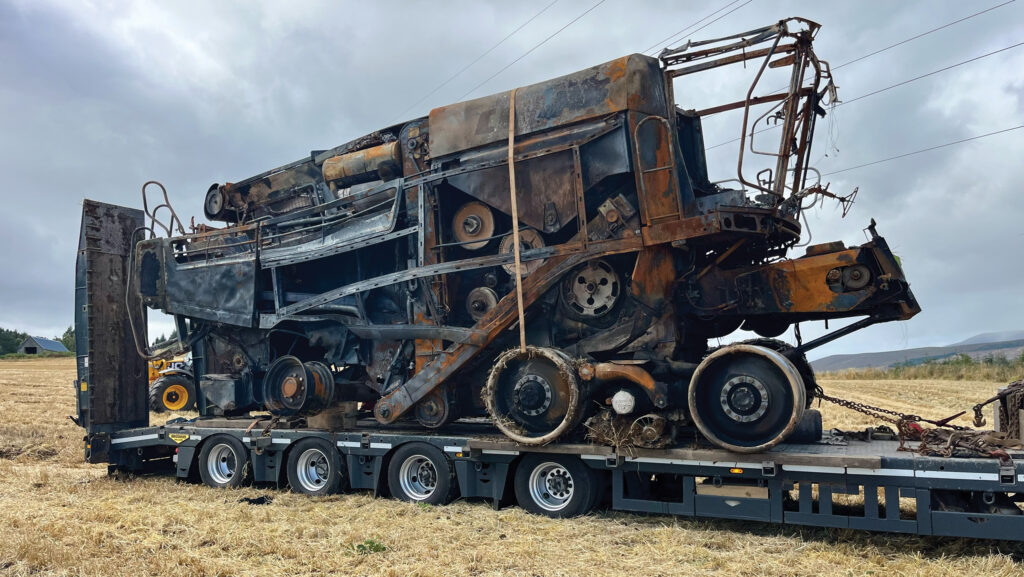 © Stuart Wilson
© Stuart Wilson Stuart Wilson will be combine shopping for the second winter in succession, after his long-serving Lexion met a fiery end halfway through harvest.
Having contended with several niggles on the second-hand 650 he bought over the winter, his lead machine, a 15-plate 760, cut its last spring barley at 1.30pm on 17 August.
See also: New Holland’s monster CR11 combine notches 100t/hour in Norfolk
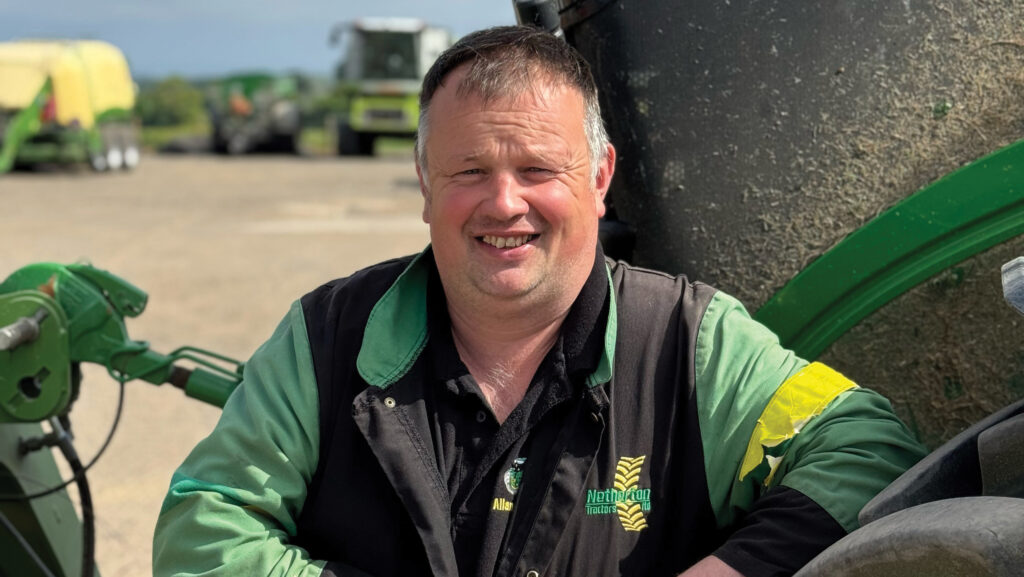
Stuart Wilson © MAG/Oliver Mark
“I’d given it a thorough blow-down that morning, it had been running perfectly, and the cutting conditions couldn’t have been better: warm and sunny with a gentle breeze,” Stuart explains.
“The first sign of trouble was a low-power warning on the computer, then the engine note changed and, when I looked in the wing mirrors, it definitely wasn’t dust I could see.”
He grabbed the extinguisher, sprinted up to the engine bay and opened the lid – to be met with roaring flames.
With the canister discharged but the fire still out of control, Stuart could do nothing but retreat and watch as the combine was engulfed.
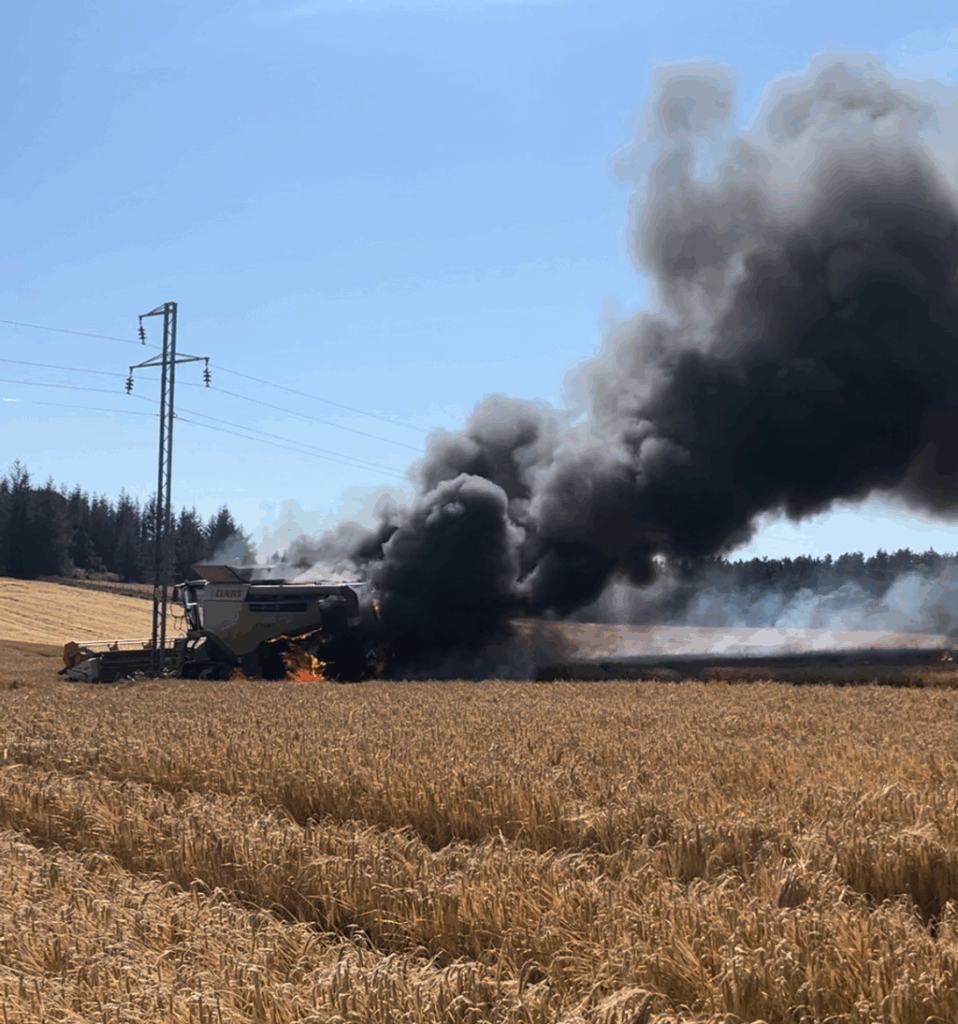
© Stuart Wilson
The fire brigade barrelled across the field – 15 miles from the Wilsons’ Fearn base – 20 minutes later.
By that point, three farmers had already spotted the billowing smoke and arrived with tractors and cultivators, carving crop breaks to try to stop the fire spreading.
“The combine wasn’t in a great spot – beneath 33,000V power lines and just down from a big forest on the hill,” says Stuart.
“It could have got out of hand very quickly but, fortunately, we managed to save all but an acre of standing crop.
As for the cause? “It started somewhere in the engine bay, and the amount of white smoke suggested an oil pipe went first.
“But it was all a blur. I watched it burn away, on my knees, full of adrenaline and smoke, and feeling pretty sad.”
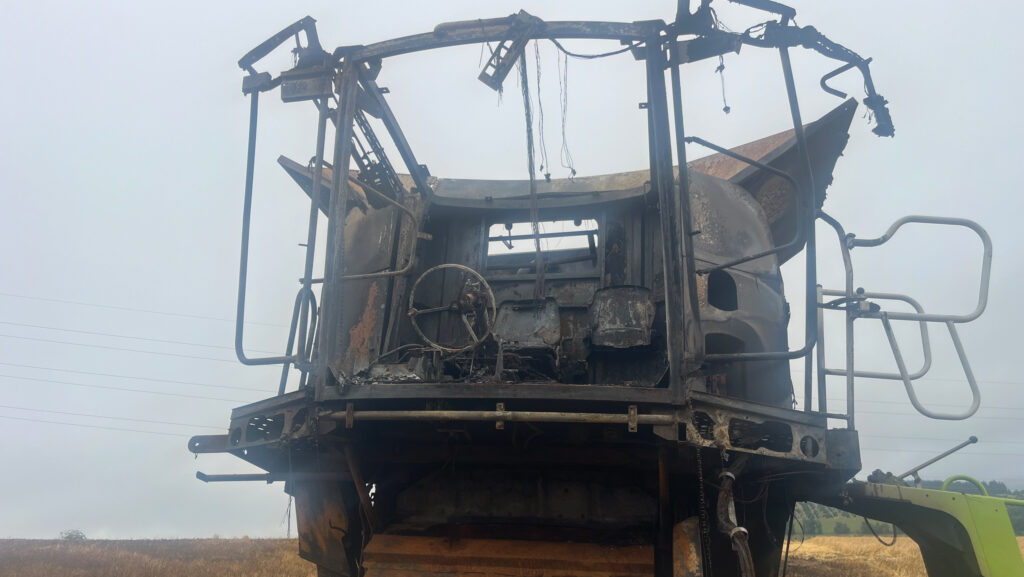
© Stuart Wilson
That said, as the old adage goes, a burnt-out combine is better than a half burnt one.
It is now in scrapyard heaven, with the cortège completed a couple of weeks ago when it was lumped on a low loader and dragged away for dismemberment.
Even then, the 1.5t of grain in the tank had barely stopped smouldering.
The only reclaimable parts were the steps and header – both of which are now residing in John Manners’ combine graveyard.
Sellars to the rescue
Thankfully, Claas dealer Sellars pulled out all the stops to keep the Wilsons’ wheels turning.
Within a couple of days, it had delivered a Lexion 760 to cut the remaining 30% of the cereal crop.
“I can’t thank the whole Sellars network enough, especially Simon Wood and Ian Turner – Woody and Buzz, as I call them – and all the lads at the Invergordon branch.
“When the chips were down, they stepped up, and we’re very grateful for their efforts.
“Having the 760 was a bonus, but I would have taken anything at that point.”
Unfortunately for Stuart, the drama wasn’t over.
The very next day, while he was still licking his wounds, he suffered another calamity – a smashed tractor windscreen as he passed an artic lorry on the road.
“One thing I’ve come to learn over the last few years is to take a few minutes every day or so to call someone, aks how they are getting on, and offload your troubles,” he says.
“It makes you realise that it’s not all that bad. Nothing beats a good yarn and some craic when it comes to dealing with the challenges farming throws up.”
Rest and recuperate
Bar the aforementioned catastrophe, the summer was easier than ever.
“We started on 3 August and had what we’d describe as an ‘English harvest’. We cut pretty much every day and drew the line at 17% moisture, which is typically unheard of in Scotland.
“Yield and quality were excellent too, though it was slightly stressful going without wet days to catch up with accounts.”
And, after all that turmoil, it’s now feet-up time at Wilson HQ.
The 260ha of winter wheat drilling is all but complete, almost three weeks ahead of schedule, thanks to the early conclusion of harvest and continued good weather.
Similarly, the 385ha of oilseed rape is also in and up, which means holiday season can commence.
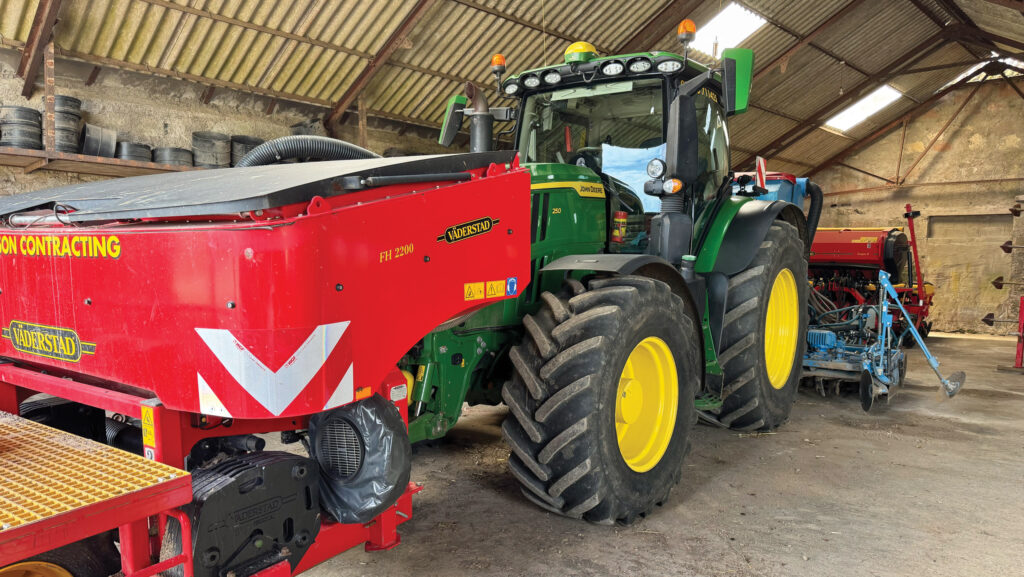
© Stuart Wilson
Silage headaches
Silage season, now a distant memory, served up its usual headaches, with several forager blow-ups caused by stone damage.
Claas dealer Sellars once again came to the rescue, providing a demo Jaguar to clear fields while breakdowns were repaired.
The weather was good, too, although crops were decidedly light – not ideal, given that margins were already tight.
“We’ll never get rich chopping silage. But it gives us the workload to keep the men busy during summer between sowing and combining, so in that way it’s a critical part of our calendar,” Stuart says.
At the time of writing, the business is 3,000 silage bales down on a typical year, albeit with 1,000 more expected from the remaining second and third cuts.
“By the time we’re finished we’ll have baled and wrapped 6,000 bales. It’s the first year in 30 that one round baler has kept up on its own.”
Streamlining the baler fleet
And it was the same story, if not more extreme, on the hay and straw front, with Stuart expecting to have 6,000 fewer round bales this year.
This was the result of two major customers, after failing to secure a guaranteed market for their straw, opting to chop their cereal acreage – an issue that could easily have been averted, he says.
“There’s no demand for straw up here but there is down south, where they may well be shouting for bales come mid-January.
“The problem is the lack of communication. If farms think they’ll need straw, then they need to be putting in their orders pre-harvest so that it can be baled.
“As it was, our customers didn’t want to gamble on baling and storing straw on the off chance that someone wants it five months later.”
This drop in bale count may well lead to some fleet rationalisation.
“I’m just getting into the guts of forward planning and, with so much more straw getting chopped, we’re over capacity on the round balers.
Whether this means streamlining the three McHale V660s and one Fusion will be determined once Stuart has crunched the numbers and mulled the options.
“Fortunately, pretty much everything else is up to date, so we won’t be shelling out on big-ticket items – bar one.”
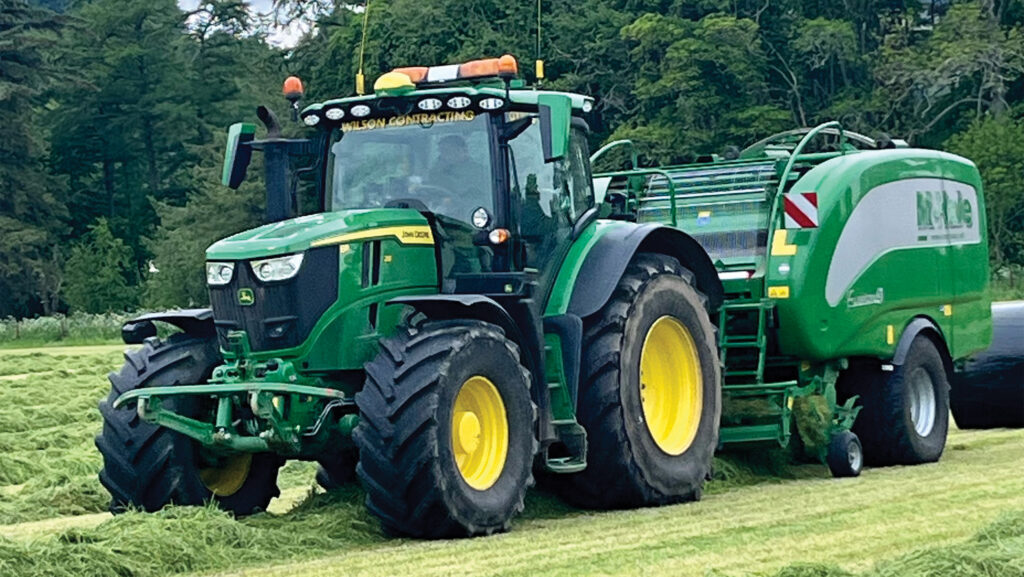
Stuart Wilson’s McHale baler © Stuart Wilson
Harvester hunt
For now, though, combine shopping is top of the agenda.
“Given the number of dispersals in England due to ‘changes in farming policy’, it should be a buyer’s market,” says Stuart.
“We’ll happily take a keenly priced Lexion if someone would rather grow flowers for the birds and the bees.
“The priority is another Claas, but I’m open-minded about the model. Ideally it would be a tracked Lexion 760 or 770 with a 30ft header, but I’d take a 670; when you’re buying second-hand you have to be flexible.
“We’ll just see what comes up. As long as it has the capacity to be on top of our main contracts, with a little in reserve for last-minute jobs – we are the fifth emergency service, after all – I’ll be happy.”
Business facts: Allan WJ Wilson, Fearn, Tain, Ross-shire
- Main services Cultivations and drilling (2,400ha), combining (700ha), forage harvesting (280ha), round baling and wrapping (7,000 bales), big square baling (13,000 bales), fertiliser spreading (1,000ha)
- Other Hedge and verge trimming (two machines running eight months a year), gritting and snow clearing
- Staff Five full-time, plus another two for harvest

